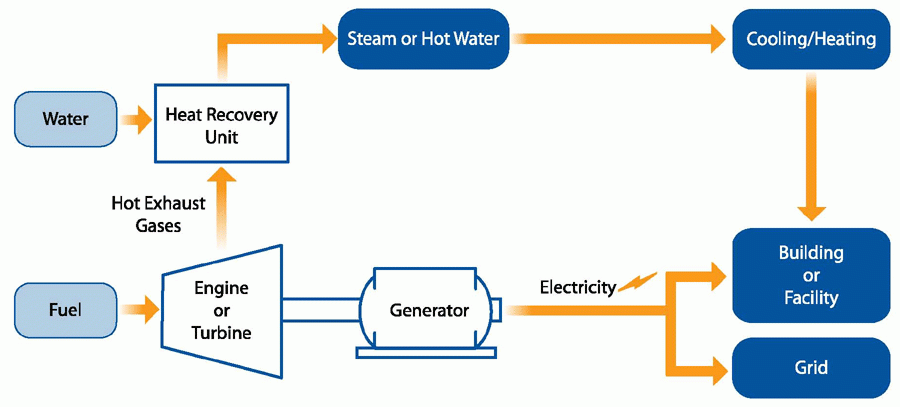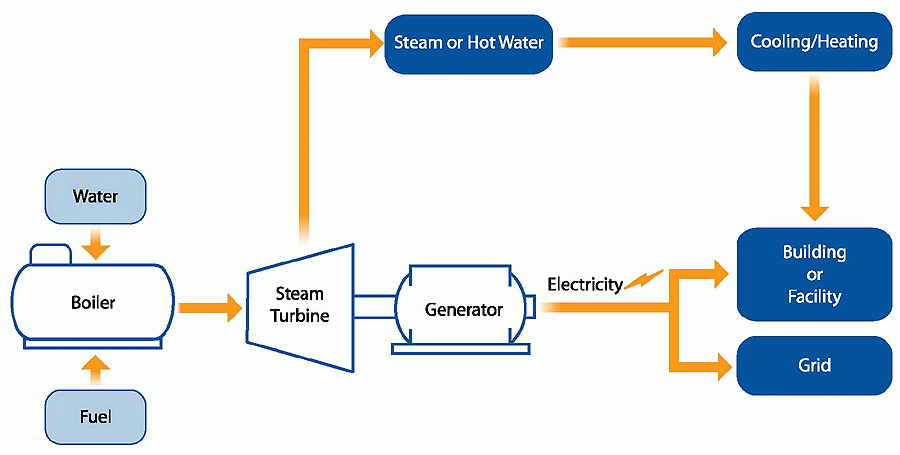What Is CHP?
CHP is an energy efficient technology that generates electricity and captures the heat that would otherwise be wasted to provide useful thermal energy—such as steam or hot water—that can be used for space heating, cooling, domestic hot water and industrial processes. CHP can be located at an individual facility or building, or be a district energy or utility resource. CHP is typically located at facilities where there is a need for both electricity and thermal energy.
Nearly two-thirds of the energy used by conventional electricity generation is wasted in the form of heat discharged to the atmosphere. Additional energy is wasted during the distribution of electricity to end users. By capturing and using heat that would otherwise be wasted, and by avoiding distribution losses, CHP can achieve efficiencies of over 80 percent, compared to 50 percent for typical technologies (i.e., conventional electricity generation and an on-site boiler).
Common CHP Configurations
The two most common CHP system configurations are:
- Combustion turbine, or reciprocating engine, with heat recovery unit
- Steam boiler with steam turbine
Combustion Turbine, or Reciprocating Engine, with Heat Recovery Unit

Combustion turbine or reciprocating engine CHP systems burn fuel (natural gas, oil, or biogas) to turn generators to produce electricity and use heat recovery devices to capture the heat from the turbine or engine. This heat is converted into useful thermal energy, usually in the form of steam or hot water.
Steam Boiler with Steam Turbine

With steam turbines, the process begins by producing steam in a boiler. The steam is then used to turn a turbine to run a generator to produce electricity. The steam leaving the turbine can be used to produce useful thermal energy. These systems can use a variety of fuels, such as natural gas, oil, biomass, and coal.
The Catalog of CHP Technologies includes a comprehensive list of CHP technologies and provides information about their cost and performance characteristics.
CHP Applications
CHP is used in over 4,400 facilities nationwide, including:
- Commercial buildings—office buildings, hotels, health clubs, nursing homes
- Residential—condominiums, co-ops, apartments, planned communities
- Institutions—colleges and universities, hospitals, prisons, military bases
- Municipal—district energy systems, wastewater treatment facilities, K-12 schools
- Manufacturers—chemical, refining, ethanol, pulp and paper, food processing, glass manufacturing
A number of site-specific factors will determine if CHP might be a good technical and economic fit for your facility. Answer a few simple questions to determine if your facility is a good candidate for CHP.
